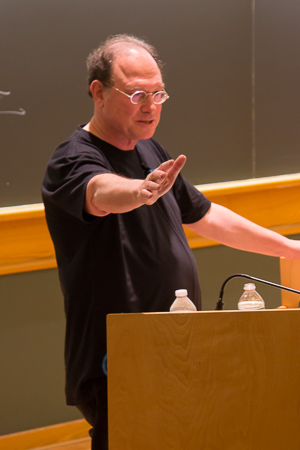
University of California, Los Angeles, CA - Arnold Berk's laboratory studies the molecular interactions that regulate transcription in mammalian cells, focusing particular attention on transcription factors encoded by oncogenes and tumor suppressors and the regulation of cell replication. Since the decision to initiate transcription is the key control point regulating expression of most genes, transcriptional regulation determines the properties of both normal and abnormal cells.
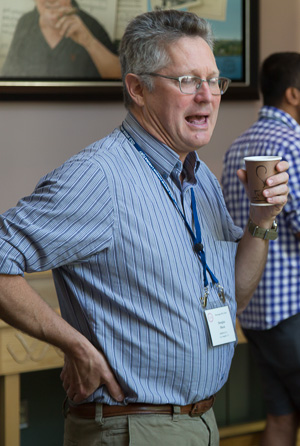
HHMI, University of California, Los Angeles, CA - Douglas Black's lab is interested in the regulation of pre-mRNA splicing and the biochemical mechanisms that control changes in splice sites. The sequences of metazoan genomes, with their relatively low gene numbers, have highlighted the question of how protein number can be expanded beyond the gene number for a complex organism. Alternative splicing, which allows the production of multiple mRNAs and hence multiple proteins from a single gene, is a major contributor to protein diversity. However, despite its key role in gene expression, this process is poorly understood mechanistically.

Tufts University School of Medicine, Boston, MA - Currently Professor Emeritus of Biochemistry, Graduate Programs in Biochemistry and Molecular Microbiology at Tufts University. George Brawerman's lab studied translational control of gene expression; the characteristics and significance of the polyadenylate sequence in mammalian messenger RNA; and mechanisms of mRNA decay. They also developed methods for the isolation of RNA from mammalian cells. George Brawerman was born 1927 and survived the war as an adolescent in Belgium. He wrote a memoir about his experience, entitled, On the Fringe of the Holocaust 1940-1944. This includes a description of the German occupation of Belgium, of anti-Jewish measures, of Belgian antisemitism and deportations, of his life in hiding in Brussels and in a children's social service camp in Chevlipont with other Jewish children, of his experiences in the resistance movement, and of the liberation and its aftermath.
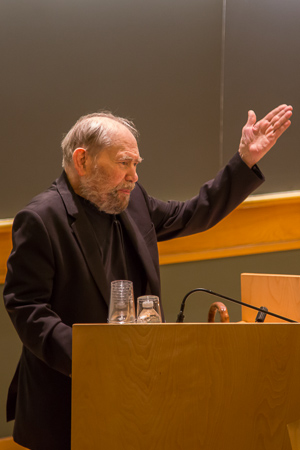
Janelia Farm Research Campus, HHMI, Ashburn, VA - Sydney Brenner has made several seminal contributions to the field of molecular biology. The first was proving that all overlapping genetic coding sequences were impossible. Brenner also proposed the concept of a messenger RNA, based on correctly interpreting the work of Elliot "Ken" Volkin and Larry Astrachan. Then, with Francis Crick, Leslie Barnett and Richard J. Watts-Tobin, Brenner genetically demonstrated the triplet nature of the code of protein translation. Brenner, with George Pieczenik, created the first computer matrix analysis of nucleic acids using TRAC. Crick, Brenner, Klug and Pieczenik published a pioneering paper on the origin of protein synthesis, where constraints on mRNA and tRNA co-evolved allowing for a five-base interaction with a flip of the anticodon loop. Brenner then focused on establishing Caenorhabditis elegans as a model organism for the investigation of animal development including neural development. For this work, he shared the 2002 Nobel Prize in Physiology or Medicine with H. Robert Horvitz and John Sulston.
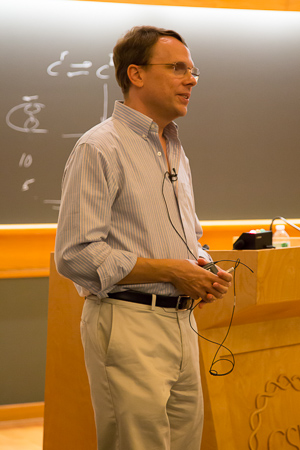
Harvard Medical School, Boston, MA - The research of Buratowski Lab addresses the mechanism of gene expression in eukaryotes. The lab works on RNA polymerase II transcription initiation and the subsequent processing of the mRNA. Current projects include TFIID (TATA-Binding Protein and the TAF subunits), TFIIB, TFIIE, TFIIH, linkage of transcription and mRNA processing via modification of the RNA polymerase II C-terminal domain, and the interplay between the transcription machinery and chromatin.
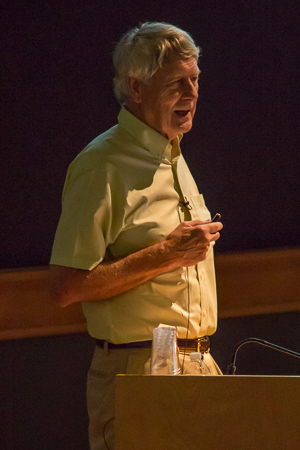
University of Wisconsin, School of Medicine and Public Health, Madison, WI - Work in Richard Burgess's laboratory is focused on prokaryotic and eukaryotic RNA polymerases and transcription machinery and their role in regulation of RNA synthesis. In particular, the lab studies the structure and function of the initiation factor, E. coli RNA polymerase sigma70 subunit, by a concerted use of protein and physical chemistry, monoclonal antibodies, molecular genetics, and biochemistry. They have used special monoclonal antibodies to immunopurify RNA polymerase II from wheat, yeast, and human cells in order to study the subunit architecture of the enzyme and the interaction of the enzyme with DNA and transcription factors. Protein expression and purification methods are being developed. They have special expertise in protein refolding, gentle immunoaffinity chromatography, and study of protein-protein interactions, including a new technology to detect and isolate weak protein-protein interactions.
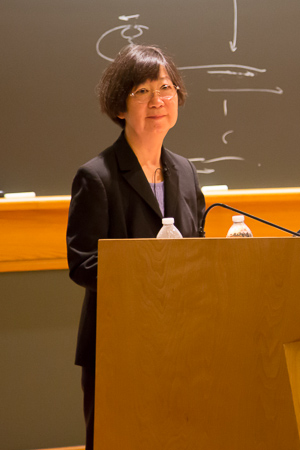
University of Alabama, Birmingham, AL - The Chow Lab has been conducting basic research on the pathobiology of the human papillomaviruses (HPVs) for more than 25 years. Their extensive examination of patient specimens has revealed that productive infection only occurs in differentiated squamous epithelia. They have developed organotypic cultures of primary human keratinocytes, recapitulating a full thickness skin. Using this culture system, they have examined the functions of virus encoded oncoproteins, as well as the targeted host tumor suppressor proteins. The Chow Lab recently established a novel approach which produces for the first time high titers of infectious HPV-18 in this organotypic culture system. They have investigated infection process and mechanism of antibody neutralization of the virus. The Chow Lab has also conducted extensive functional analyses of the viral replication proteins and examined the mechanisms of viral DNA replication and persistence. They also use a wide range of molecular and biochemical techniques, retrovirus-mediated gene transfer, and fluorescence imaging.
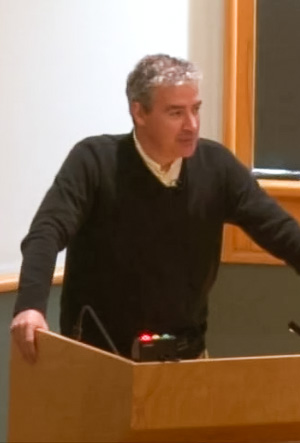
University of Sussex, Brighton, UK - Juan Pablo Couso's laboratory investigates a new class of non-canonical eukaryotic genes, encoding small Open Reading Frames (smORFs). These genes, defined by the tarsal-less gene (Galindo et al. 2007 PLoS Biology 5: e106), encode and express peptides of less than 50 amino acids, sometimes from polycistronic RNA messengers which are usually classified as non-coding RNAs. They are currently trying to A) understand the molecular mechanisms of tarsal-less function, and B) characterize new genes of this class (and there seem to be hundreds if not thousands in each genome) and their molecular and cellular functions.
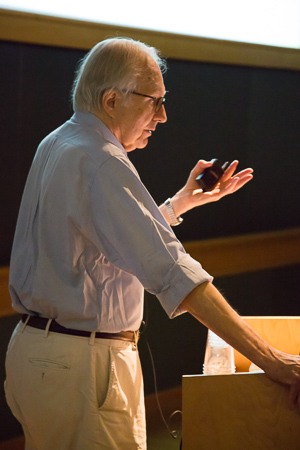
The Rockefeller University - Dr. Darnell's laboratory studies how signals from the cell surface affect transcription of genes in the nucleus. Originally using interferon as a model cytokine, the Darnell group discovered that cell transcription was quickly changed by binding of cytokines to the cell surface. The bound interferon led to the tyrosine phosphorylation of latent cytoplasmic proteins now called STATs (signal transducers and activators of transcription) that dimerize by reciprocal phosphotyrosine-SH2 interchange. Crystallographic analysis defined functional domains in the STATs, and current attention is focused on two areas: how the STATs complete their cycle of activation and inactivation, which requires regulated tyrosine dephosphorylation; and how persistent activation of STAT3 that occurs in a high proportion of many human cancers contributes to blocking apoptosis in cancer cells.
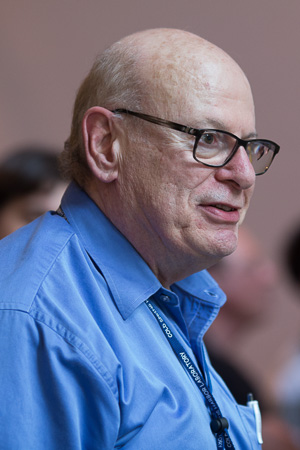
HHMI, University of Pennsylvania, Philadelphia, PA - The research efforts of the Dreyfuss laboratory are presently focused on three interrelated topics: 1. The structure and function of the major pre-mRNA-binding proteins (hnRNPs) and mRNA-binding proteins (mRNPs), with particular focus on the role of these proteins in the formation and function of mRNA. 2. The transport of proteins and RNAs between the nucleus and the cytoplasm. The Dreyfuss lab found that while some hnRNP proteins are confined to the nucleus, many others shuttle continuously between the nucleus and the cytoplasm. 3. The molecular function of SMN (Survival of Motor Neurons), the protein product of the Spinal Muscular Atrophy disease gene, and the function of Gems: a novel nuclear structure containing the SMN protein. The Dreyfuss lab found a major nuclear structure that contains the SMN protein (the disease gene of Spinal Muscular Atrophy).
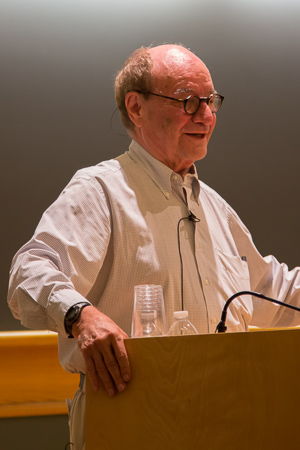
BioVentures Investors, Wellesley, MA - Wally Gilbert is a pioneering molecular biologist, who in 1975 developed a method of rapid DNA sequencing. In 1978, he first proposed the existence of introns and exons and explained the evolution of introns. In 1986, he proposed the RNA world hypothesis for the origin of life, based on a concept first proposed by Carl Woese in 1967. Wally Gilbert is formerly a member of the Harvard faculty, and a founder of Biogen. He is also co-founder of several pharmaceutical companies, among them Myriad Genetics, Paratek Pharmaceuticals, Memory Pharmaceuticals, and Pintex Pharmaceuticals. In 1980, Wally Gilbert shared in the Nobel Prize in Chemistry with Fred Sanger, for their contributions concerning the determination of base sequences in nucleic acids (and with Paul Berg, for his fundamental studies of the biochemistry of nucleic acids, with particular regard to recombinant-DNA).
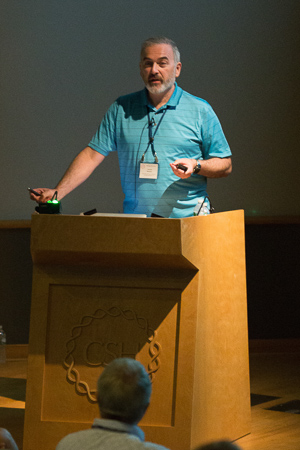
Cold Spring Harbor Laboratory, Cold Spring Harbor, NY - Krainer Lab uses multidisciplinary approaches to study splicing mechanisms and regulation. A major focus is the study of the detailed structures, posttranslational modifications, RNA-binding, and functions of selected factors, as well as their mechanisms of action in vivo. In particular, they study the human SR and hnRNP A/B protein families, members of which interact combinatorially to modulate the selection of many alternative splice sites. Individual SR proteins, such as SRSF1, are also required for spliceosome assembly. They are interested in their specificity in recognition of exonic or intronic elements that dictate splicing efficiency and alternative splicing patterns, as well as in their additional functions. Krainer Lab also investigates how point mutations in exons or introns result in aberrant splicing, leading to numerous genetic diseases. They have focused on the SMN1/2 genes associated with a neuromuscular disease, spinal muscular atrophy. Their work on SMN1/2 has provided the basis for ongoing clinical trials, currently in phase 2.
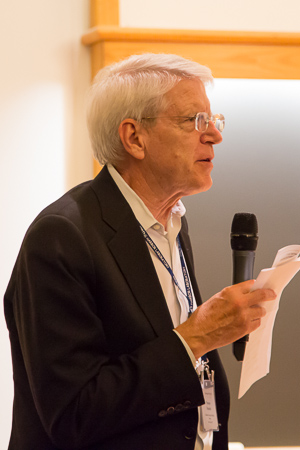
Columbia University Medical Center, New York, NY - The laboratory of Tom Maniatis is interested in understanding fundamental mechanisms of transcription and RNA splicing in the nervous system, and how these mechanisms bear on neuronal connectivity and neurodegenerative diseases. Interest in neuronal connectivity arose from their discovery of a remarkable organization of a large cluster of genes encoding cell surface cadherin-like proteins called protocadherins. The laboratory is also using embryonic stem cell differentiation and deep sequencing methods to study transcription, RNA splicing, protein-RNA interactions, and microRNAs in ALS disease models. This involves studies of SOD1, FUS and TDP43 mouse models, and human patient derived iPS cells. Their current focus is in understanding the role of astrocyte/motor neuron interactions in ALS disease mechanisms. In addition, they are interested in the role of the immune system in ALS, and are investigating the role of microglia in ALS disease mechanisms.
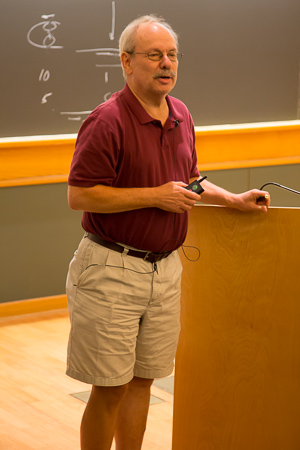
Columbia University, New York, NY - Dr. Manley's laboratory studies several aspects of gene expression in animal cells. These include transcription of mRNA encoding genes, mRNA splicing, and mRNA polyadenylation. All three of these processes occur in the cell nucleus and require numerous protein (and in the case of splicing, RNA) factors that assemble into massive multi-subunit complexes. Important goals are to understand how the complexes assemble and function, to learn how these important molecules act to regulate gene expression and how they themselves are controlled, and to understand how these processes contribute to cell growth, development and disease. These studies involve a large number of experimental approaches, including a variety of in vitro assays, biochemical fractionation and protein purification, structural analyses, and genetic studies using a variety of gene targeting approaches in yeast, mammalian cell culture and mice. Dr. Manley's lab and others have shown that these three processes, transcription, splicing and polyadenylation, are all linked, or coupled, in interesting ways.
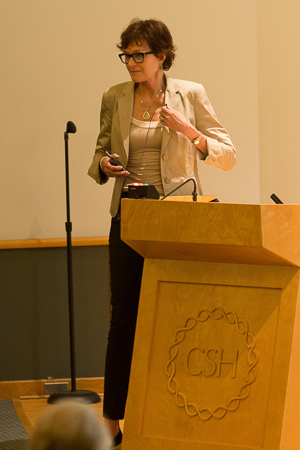
University of Rochester Medical Center, Rochester, NY - Research in Lynne Maquat's lab focuses on RNA decay pathways. One pathway, called nonsense-mediated mRNA decay (NMD) or mRNA surveillance, surveys newly synthesized mRNAs during what we call a "pioneer" round of translation. This round of translation involves mRNA that is generally associated with the cap binding heterodimer CBP80 and CBP20. It is distinct from the type of translation that supports the bulk of cellular protein synthesis and involves a different cap binding protein, eukaryotic initiation factor (eIF) 4E. As a rule, if translation terminates more than 50-55 nt upstream of an exon-exon junction that is marked by the NMD factors Upf3 or Upf3X, Upf2 and ultimately Upf1, at what we initially defined as a "splicing-dependent mark" and later, with Melissa Moore, characterized as an exon-junction complex then the mRNA will be subject to NMD. By the time CBP80 and CBP20 have been replaced by eIF4E, the Upf mark has been removed so that mRNA is largely immune to NMD.
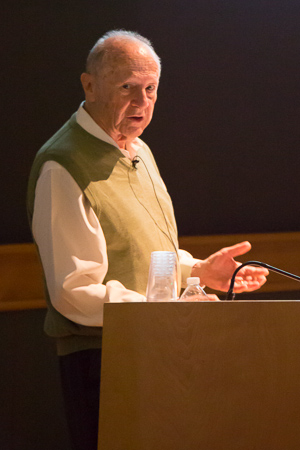
Harvard University, Cambridge, MA - Meselson Lab is employing rotifers of Class Bdelloidea, a group of small freshwater invertebrates, as a particularly advantageous model system for investigating the causes and control of aging -- the progressive increase in death rate with age that occurs in adult humans and in other animals. Rotifers of Class Bdelloidea are common freshwater invertebrates whose ancient origin and apparent lack of sexual reproduction have posed the principal challenge to the generally held view that genetic transfer between individuals within a species is essential for its long-term evolutionary success. Meselson Lab has recently found, however, that bdelloid rotifers do engage in homologous genetic transfer within a species (or clade) and are attempting to characterize the mode of such exchange and the population structure within which it occurs.
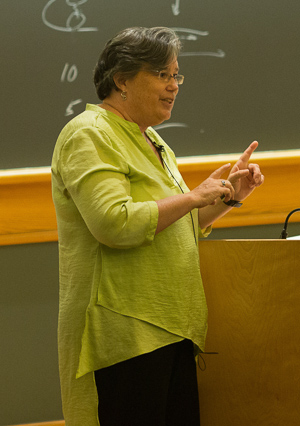
University of Massachusetts Medical School, Worcester, MA - Moore Lab is broadly interested in post-transcriptional gene regulation in eukaryotes via mechanisms involving RNA and RNA-protein (RNP) complexes. Their research centers on pre-mRNA processing and large RNA-protein (RNP) complexes. They study their basic structures and functions as well as their contributions to human disease. Current areas of investigation include: (1) single molecule analysis of spliceosome assembly; (2) messenger RNP (mRNP) structure and function; (3) RNP egress by nuclear envelope budding; and (4) development of novel therapeutic approaches targeting RNA-based processes. Enabling these studies, Moore Lab's research spans the disciplines of cell and molecular biology, biochemistry, chemical biology, biophysics and bioinformatics.
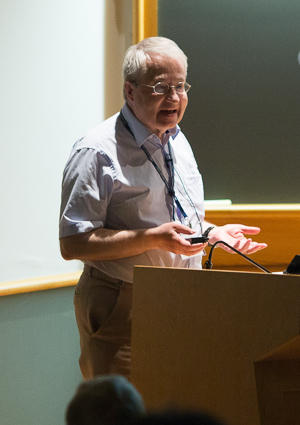
Ecole Normale Supéeure, Paris, France - Michel Morange was trained in biochemistry and molecular biology at the Pasteur Institute in Paris. He then turned to cell biology, and entered into Françs Jacob's lab in the same Institute. With Olivier Bensaude, he created in 1991, at the Ecole normale supéeure in Paris, a group whose project was to characterize the regulation of heat shock gene expression. Michel Morange received also in parallel a formation in history and philosophy of sciences. His main interest is the history of the transformations of biology during the 20th century - in particular the rise of molecular biology. More recently, he turned his attention to the present transformations of biology, with the rise of new disciplines such as systems biology and synthetic biology, the increasing place of epigenetics, the criticism of reductionism, the growing role of interdisciplinarity, and the reemergence of the question of life.
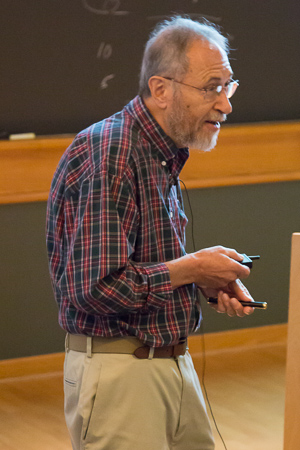
National Institute of Allergy & Infectious Diseases, Bethesda, MD - The goals are to determine the mechanisms used by viruses to infect cells, express and replicate their genomes, assemble infectious particles, and evade the host immune response. Basic information obtained from these studies is used to design antiviral agents and live and subunit recombinant vaccines. In addition, viruses are engineered as expression vectors for biotechnology.
Poxviruses have provided unique opportunities to combine molecular, genetic, microscopic, and immunologic approaches to achieve many of the above goals. Recent studies have also been directed to the characterization and testing of candidate vaccines for human and simian immunodeficiency viruses.
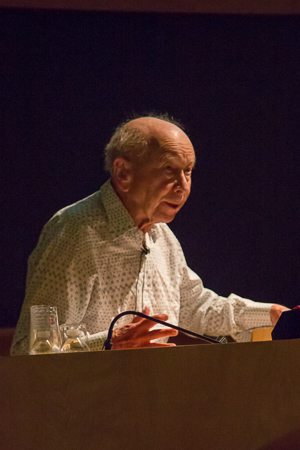
Dana Farber Cancer Institute, Boston, MA - A major focus of research activities in the laboratory of Arthur Pardee is to identify and characterize clinically useful breast cancer markers by using differential RNA-display technique. The lab has identified several genes by this approach and large-scale hybridization array studies have identified gene clusters whose patterns of expression in human breast tumor biopsy specimens are linked with clinical parameters including estrogen receptor status and tumor stage. Similar analysis revealed differential expression of HSIX-1, a homeobox gene in human breast cancer cells and HLM gene that shows homology with oxysterol binding protein in human lung cancers. Another research focus of this laboratory is to identify alternative target-directed therapy for human breast cancers, more specifically for anti-hormone resistant breast cancers. An approach which is also currently investigated in this laboratory is differentiation therapy. Compounds that are found to induce terminal cellular differentiation, cell cycle arrest and apoptosis are proposed to be potential therapeutic agents for human breast cancers.

Cold Spring Harbor Laboratory - Ludmila (Mila) Pollock is the Executive Director of the Library & Archives at Cold Spring Harbor Laboratory (CSHL). She has led the Library & Archives since 1999, as well as the Genentech Center since 2006. The CSHL Library is a state-of-the-art library whose mission is to serve the research needs of the international scientific community at CSHL. The CSHL Archives is internationally recognized for building and promoting extensive collections of original documents pertaining to the history of molecular biology and genetics. Under Mila Pollock's leadership, the CSHL Library & Archives has been awarded more than $1.75 million in grant support. Mila has conceived and spearheaded numerous special projects, including the acclaimed CSHL Oral History Project: Talking Science (http://oralhistory.cshl.edu), for which she interviewed more than 150 prominent international scientists in molecular biology, genetics, and biotechnology.
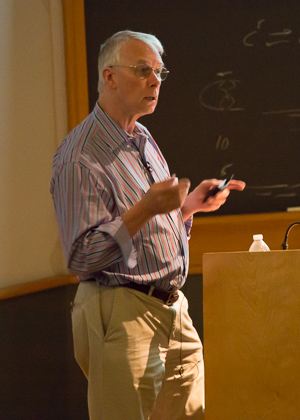
New England Biolabs, Ipswich, MA - Rich Roberts's laboratory has a long history of research on restriction enzymes and their associated DNA methyltransferases. He is interested in developing methods to find new enzymes with novel properties and he uses a combination of bioinformatics and biochemical experimentation to probe DNA sequence information from the many microbial genome sequences that are now available. In addition, Rich is interested in the use of bioinformatics to explore the microbial genomes and use the restriction systems as a paradigm for other general types of genes that are present. The overall theme of his work is to use bioinformatics to make predictions that can then be tested experimentally in the laboratory. This can then lead to better bioinformatics predictions. He also runs REBASE, a database of information about restriction enzymes and their associated methyltransferases. Rich was awarded the 1993 Nobel Prize in Medicine with Phillip Allen Sharp for the discovery of introns in eukaryotic DNA and the mechanism of gene-splicing. He was knighted in 2008.
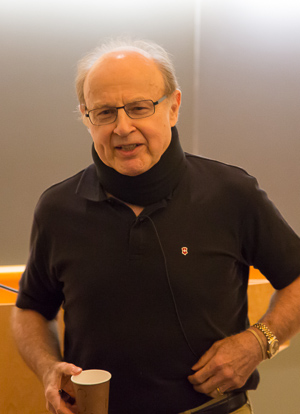
The Rockefeller University, New York, NY - One of the biggest questions in biology is how cells control or regulate transcription, the process by which genes are copied into RNA for translation into proteins, and how this process breaks down in certain diseases such as cancer. Dr. Roeder's broad objectives are to understand the specific regulatory events that control these processes, as well as more fundamental aspects of transcription activation and repression mechanisms. The Roeder lab's multipronged experimental strategy begins with the use of a biochemical tool called the cell-free system, pioneered by Dr. Roeder, that allows researchers to recreate the essence of transcription in a test tube with cloned genes and cellular extracts. They then biochemically dissect these systems, purify and clone the individual factors and study the structure, function and regulation of these factors by a combination of biochemical and genetic (i.e., transgenic, knockout and knockin mice) analyses.
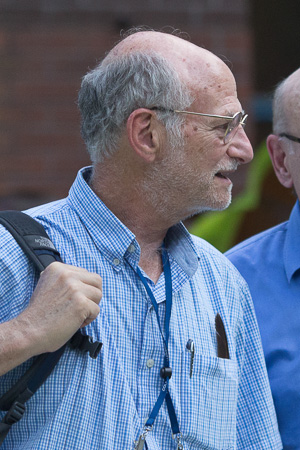
Brandeis University, Waltham, MA - Michael Rosbash's Lab is interested in RNA processing and the genes and mechanisms that underlie circadian rhythms. They are interested in several aspects of cotranscriptional mRNP assembly and surveillance issues, and they study them primarily in the yeast Saccharomyces cerevisiae because of its genetic advantages. Yeast pre-mRNA splicing is an object of attention, as there is good evidence that splice site identification and splice site partner assignment rely on the earliest interactions between the pre-mRNA substrate and a subset of splicing factors. One goal has been to define the machinery that underlies the almost ubiquitous process of circadian rhythmicity. Two more pressing goals are now: (1) to understand in more biochemical detail how the Drosophila circadian clock works-for example, what keeps 24 hour time and what is the relationship of the endogenous pacemaker to the external light-dark cycle? (2) to define and understand the neural circuit in the fruit fly brain that underlies the circadian rest-activity cycle. The lab is working on the regulation of clock protein function and its relationship to CRY, the major Drosophila photoreceptor protein.
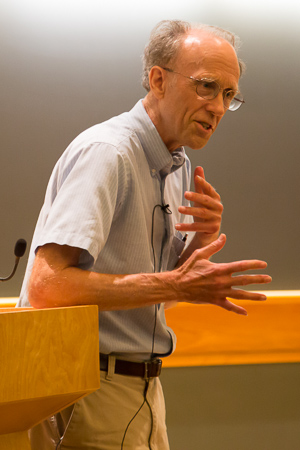
John Hopkins University, Baltimore, MD - Research in Robert Schleif's laboratory is directed at understanding the basic biochemical and biophysical principles involved in protein function through the combined use of biochemistry, genetics, genetic engineering, and biophysics. Their criterion for understanding is that they can design and build systems that actually work and make use of these principles. Since they have had extensive experience with the arabinose operon and systems related to it and they have a large collection of mutations in AraC and the regulatory region as well as many mutant DNA's and proteins, many of their ongoing studies use this system. The ara system permits economic and rapid handling of the biology while displaying most of the repertoire of protein-protein, protein-DNA and gene regulatory principles that are found in prokaryotes and eukaryotes. Approaches commonly used in the laboratory include biochemistry, genetics, genetic engineering, physiological measurement, and biochemical and physical-chemical approaches, for example crystallography, fluorescence, electrophoresis, plasmon resonance, NMR, as well as computational approaches. Schlief Lab's primary, but not only, subject for comparison of theory and experiment is AraC protein. Frequently they develop new experimental techniques to facilitate our studies.
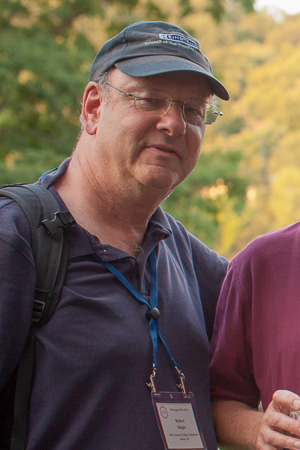
Albert Einstein College of Medicine, Bronx, NY - The laboratory of Robert Singer seeks to understand the expression and movement of mRNA from transcription through degradation and the effect that defects in these processes have on health. They develop methods to label RNA in fixed and living cells using fluorescent probes and develop microscopy techniques and image analysis algorithms to visualize and quantify many mRNAs simultaneously. Using these technologies, they can observe single mRNAs localizing to cytoplasmic compartments such as the leading edge of a fibroblast, the bud tip of yeast or the axonal process of neurons and follow these single mRNAs from transcription, nuclear export through translation and degradation. Because these techniques yield quantitative fluorescence data, they are able to apply mathematical modeling to test mechanistic hypotheses.
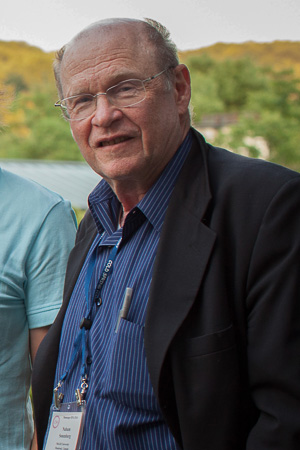
McGill University, Montré, Quéc, Canada - Dr. Sonenberg studies the molecular basis of the control of protein synthesis in eukaryotic cells and its importance in diseases such as cancer, obesity, diabetes and neurological diseases. His research program is as follows: 1) Translational control of cancer: His lab is currently collaborating with the pharmaceutical industry to discover drugs that inhibit eIF4E phosphorylation. 2) Viruses as anti-cancer drugs: The lab's current focus is to delineate through high-throughput strategies the impact of translation control and how it can be best suited for specific oncolytic viral therapeutic contexts. 3) Mechanism of miRNA action in translation and mRNA decay: Their findings will help in understanding the role that miRNAs play in cancer development. 4) Control of Neuronal translation in plasticity, learning and memory: Elucidating the mechanisms governing neuronal protein synthesis at the synapse should facilitate the design of novel therapeutic avenues.
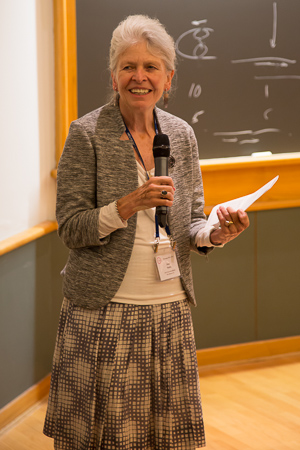
Yale University/HHMI, New Haven, CT - Joan Steitz's laboratory is interested in the multiple roles played by noncoding RNA-protein complexes in gene expression in vertebrate cells. Small RNA-protein complexes (RNPS) are ubiquitous in eukaryotic cells and inhabit specific cellular compartments. The most famous small nuclear RNPs (snRNPs) participate in pre-mRNA splicing by recognizing important intron signals and assembling to form an active splicing complex called a spliceosome. Several lower abundance snRNPs, which are related to the splicing snRNPs and act in either the excision of a rare, divergent class of introns or in other nuclear pre-mRNA processing events, are also being analyzed. The nucleolus possesses a distinct family of related snRNPs. Joan Steitz's lab is investigating their functions in pre-ribosomal RNA processing, as well as their unusual mode of biogenesis. Finally, they are studying viral snRNPs, found in cells infected by some mammalian Herpes viruses.
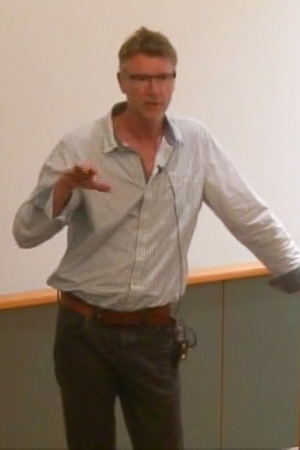
Wellcome Center for Cell Biology; University of Edinburgh, UK - The aim of Tollervey Lab is to understand the nuclear pathways that process newly transcribed RNAs and assemble the RNA-protein complexes, the mechanisms that regulate these pathways and the surveillance activities that monitor their fidelity. They use the following techniques: Fast kinetic analyze labeling supported by mathematical modeling to analyze rapid processing. UV crosslinking and analysis of cDNAs (CRAC) to determine sites of RNA-protein interaction. Crosslinking, ligation and sequencing of hybrids (CLASH) to experimentally identify RNA-RNA interactions. These techniques were developed to understand fundamental RNA metabolism in budding yeast, but are being applied in systems from pathogenic E.coli to virus-infected mammalian cells.
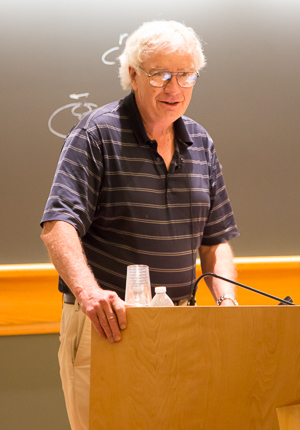
Albert Einstein College of Medicine, Bronx, NY - In the yeast Saccharomyces cerevisiae, the synthesis of ribosomes consumes an extraordinary proportion of the cell's resources. In mammalian cells the quantitative aspects of ribosome synthesis may be less substantial, though still important. However, mammalian cells monitor ribosome synthesis closely, and any evidence of problems with ribosome synthesis can bring on a process known as 'nucleolar stress.' Naturally, such a response provides strong selection for suppression of the p53 response. Such selection is inherently carcinogenic, and aberrations in ribosomal genes, such as haploinsufficiency for a ribosomal protein gene, often lead to cancer. The laboratory of Jonathan Warner is learning and developing tools to mine data, looking for unexpected relationships between the products of the 80 ribosomal protein (RP) genes, the 2000 RP pseudogenes, the 75 mitochondrial RP genes, and the ~200 genes encoding ribosome assembly factors in healthy and diseased cells. In the near future, they will expand their analyses to include the mitochondrial RPs, since the role in human disease of mitochondrial defects is becoming increasingly apparent.
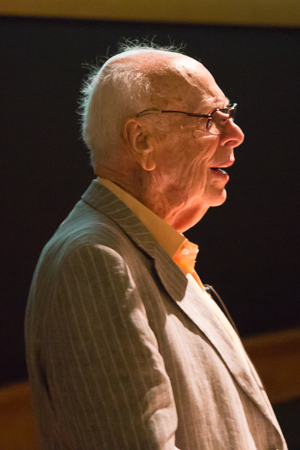
Cold Spring Harbor Laboratory - In 1962, James D. Watson shared the Nobel Prize for Physiology or Medicine with Francis Crick and Maurice Wilkins for their discovery of the double-helix structure of deoxyribonucleic acid (DNA) in 1953. From 1956 to 1976, Watson was a faculty member in the Biology department at Harvard University, where the focus of his research was RNA and its role in the transfer of genetic information. One of Watson's other major interests is education. His first textbook, Molecular Biology of the Gene, set new standards for biology textbooks, and it was followed by Molecular Biology of the Cell, and Recombinant DNA. Watson has also played a significant role in the development of science policy, from the War on Cancer, through the debates over the use of recombinant DNA, to promoting the Human Genome Project. From 1988 to 1992, he ran the Human Genome Project at the National Institutes of Health while still directing Cold Spring Harbor Laboratory (CSHL). Watson has had a long association with CSHL, beginning as a student in a popular summer course on phage genetics. Watson took over the directorship of the Lab in 1968. He is currently Chancellor Emeritus of CSHL. Since 2008 his research interests have moved to the curing of cancer focusing on the biochemistry of cancer cells as opposed to their genetic origins. In a recent paper, Jim sets forth a novel hypothesis regarding the role of oxidants and antioxidants in cancers that are currently incurable, notably in late-stage metastatic cancers.